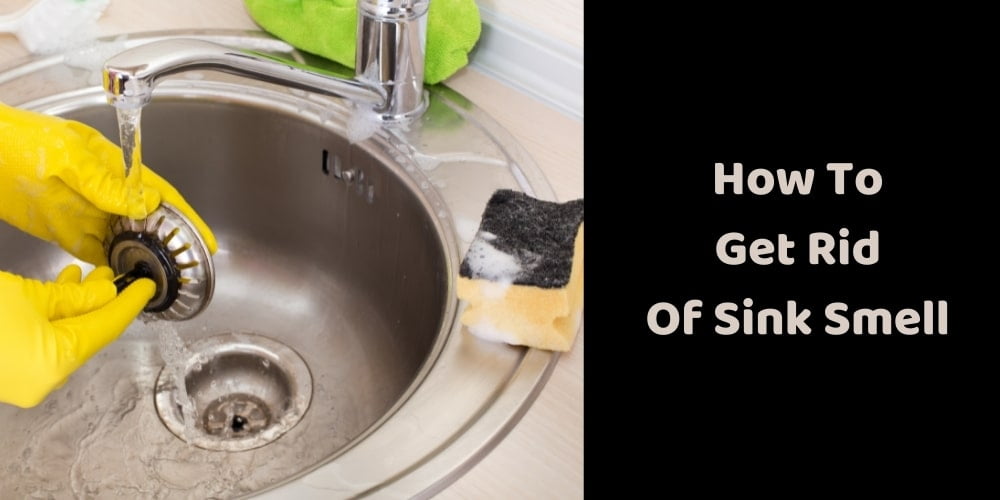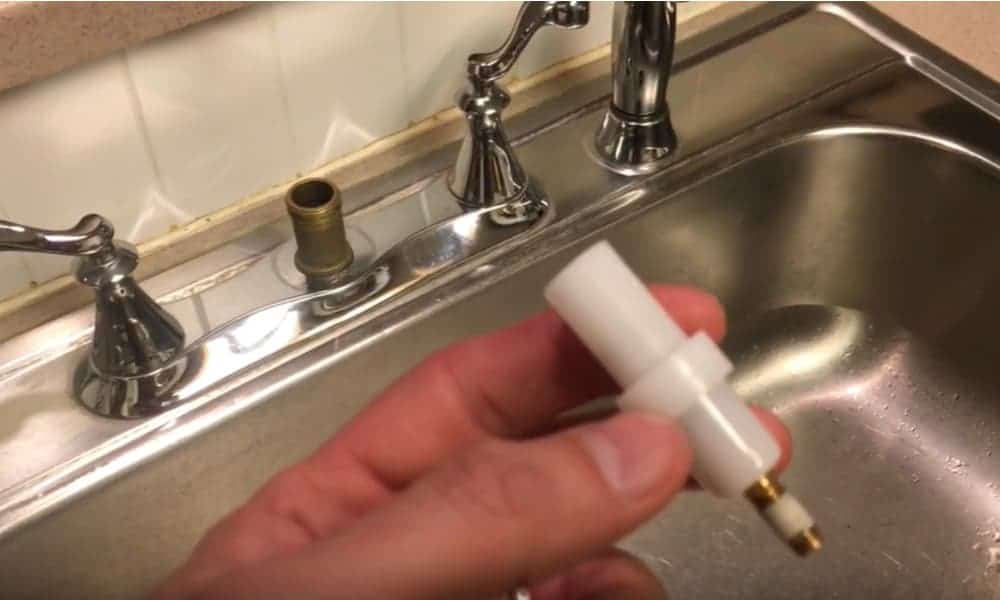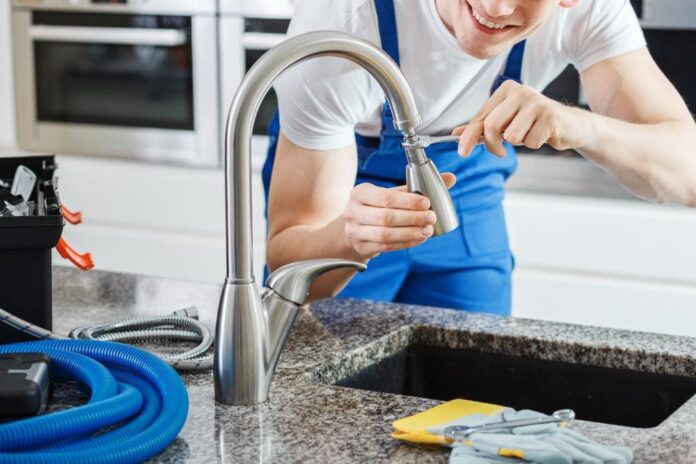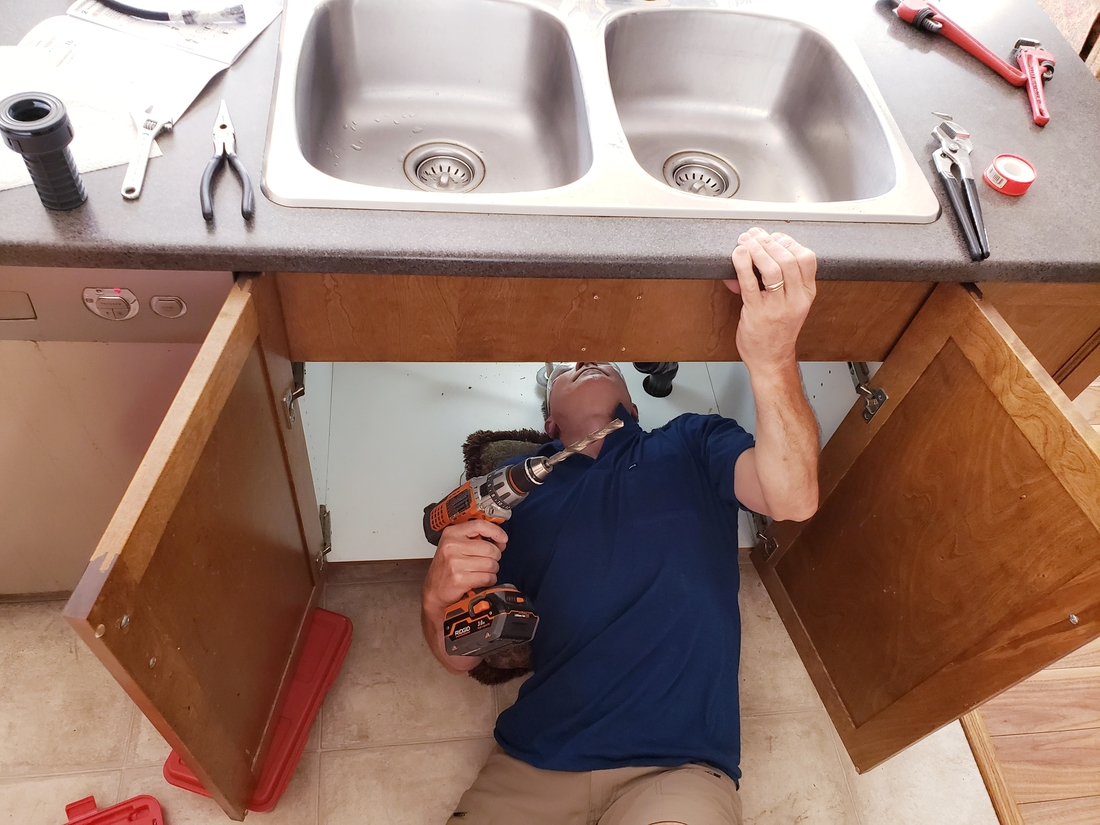If you've ever experienced the frustration of a kitchen sink faucet that suddenly stops working, you know how inconvenient and disruptive it can be. From washing dishes to filling up a pot of water, a malfunctioning kitchen sink faucet can put a damper on your daily routine. But before you call a plumber or rush out to buy a new faucet, there are a few troubleshooting steps you can take to try and fix the issue yourself.How to Fix a Kitchen Sink Faucet That Stopped Working
The first step in fixing a kitchen sink faucet that has stopped working is to check the obvious - make sure the water supply to the faucet is turned on. If the water supply is on and the faucet still won't turn on, the next step is to check the aerator. The aerator is the small mesh screen at the end of the faucet where the water comes out. Over time, debris and mineral deposits can build up in the aerator, causing low water pressure or a complete blockage. You can clean the aerator by unscrewing it from the faucet and soaking it in a solution of equal parts water and vinegar for about an hour, then rinsing and reattaching it.Troubleshooting a Kitchen Sink Faucet That Won't Turn On
If checking the water supply and cleaning the aerator doesn't solve the issue, there may be a more serious problem with your kitchen sink faucet. One common cause of a faucet not working is a worn out or faulty cartridge. The cartridge is the part of the faucet that controls the flow of water. Over time, it can become worn or damaged, causing the faucet to stop working. Replacing the cartridge is a relatively simple fix, but it's important to find the right one for your specific faucet model.Common Causes of a Kitchen Sink Faucet Not Working
If you're feeling handy, there are a few DIY solutions you can try before calling in a professional. If your faucet is leaking, you may be able to stop the leak by tightening the faucet's mounting nuts or the valve stem. You can also try replacing the O-ring or seal, which can wear out over time and cause leaks. However, if the issue is more complex, it's best to leave it to the experts.DIY Solutions for a Kitchen Sink Faucet That Won't Work
If your kitchen sink faucet is beyond repair, or you're just ready for a new and upgraded look, it may be time to replace it. Before you head out to buy a new faucet, make sure you measure the distance between the holes in your sink. This will ensure that you purchase a faucet that will fit properly. You may also want to consider the style and finish of the faucet to match your kitchen's decor.Replacing a Kitchen Sink Faucet That Has Stopped Working
If your kitchen sink faucet is not working because it's clogged, there are a few methods you can try to unclog it. One option is to use a plunger to try and clear the clog. You can also try using a plumbing snake or a wire hanger to reach down into the drain and remove the obstruction. However, if these methods don't work, it may be a sign of a more serious issue with your plumbing that requires professional help.How to Unclog a Kitchen Sink Faucet That Isn't Working
To prevent your kitchen sink faucet from stopping working in the future, it's important to properly maintain it. This includes regularly cleaning the aerator, checking for leaks, and replacing any worn out parts. You should also be careful not to overload your sink with heavy objects or use excessive force when turning the faucet on and off.Tips for Maintaining a Kitchen Sink Faucet That Has Stopped Working
In some cases, a kitchen sink faucet may stop working because it is simply too old and worn out. If you have an older faucet that has been giving you trouble, it may be time to replace it. Some signs that your faucet may need to be replaced include persistent leaks, rust or corrosion, and difficulty turning the faucet on or off.Signs That Your Kitchen Sink Faucet May Need to Be Replaced
If you've exhausted all of the DIY solutions and your kitchen sink faucet still isn't working, it's time to call in a professional plumber. They will have the expertise and specialized tools to diagnose and fix the issue with your faucet. While it may be an additional cost, it will save you time and potentially more expensive repairs in the long run.Professional Help for a Kitchen Sink Faucet That Has Stopped Working
To minimize the chances of your kitchen sink faucet stopping working in the future, it's important to take preventative measures. This includes regular maintenance and being cautious of what you put down your drain. You should also consider investing in a high-quality faucet that is built to last and has a strong warranty.Preventing Future Issues with Your Kitchen Sink Faucet
The Importance of a Functional Kitchen Sink Faucet in House Design

Efficiency and Convenience
 When it comes to designing a functional and efficient kitchen, the
kitchen sink faucet
plays a crucial role. It is an essential fixture that is used multiple times a day for various tasks, such as washing dishes, filling up pots, and cleaning fruits and vegetables. A
stopped working
sink faucet can disrupt the flow of daily tasks and make them more time-consuming and frustrating. This is why it is important to invest in a high-quality faucet that can withstand daily use and provide convenience in the kitchen.
When it comes to designing a functional and efficient kitchen, the
kitchen sink faucet
plays a crucial role. It is an essential fixture that is used multiple times a day for various tasks, such as washing dishes, filling up pots, and cleaning fruits and vegetables. A
stopped working
sink faucet can disrupt the flow of daily tasks and make them more time-consuming and frustrating. This is why it is important to invest in a high-quality faucet that can withstand daily use and provide convenience in the kitchen.
Design and Aesthetic
 In addition to its functionality, the kitchen sink faucet also plays a significant role in the overall
house design
and aesthetic. With the variety of styles, finishes, and designs available, the faucet can be a focal point in the kitchen, adding to its overall appeal. A
well-designed
faucet can elevate the look of a kitchen and tie together the design elements, making it a vital aspect to consider when designing or renovating a kitchen.
In addition to its functionality, the kitchen sink faucet also plays a significant role in the overall
house design
and aesthetic. With the variety of styles, finishes, and designs available, the faucet can be a focal point in the kitchen, adding to its overall appeal. A
well-designed
faucet can elevate the look of a kitchen and tie together the design elements, making it a vital aspect to consider when designing or renovating a kitchen.
Water Conservation
 A
working
kitchen sink faucet is not only important for efficiency and convenience, but it also plays a role in water conservation. A faucet that is
not functioning
properly can lead to leaks and wastage of water, which not only increases water bills but also has a negative impact on the environment. Investing in a high-quality faucet with water-saving features can help reduce water consumption and promote sustainable living.
A
working
kitchen sink faucet is not only important for efficiency and convenience, but it also plays a role in water conservation. A faucet that is
not functioning
properly can lead to leaks and wastage of water, which not only increases water bills but also has a negative impact on the environment. Investing in a high-quality faucet with water-saving features can help reduce water consumption and promote sustainable living.
Final Thoughts
 In conclusion, a
functional
kitchen sink faucet is a crucial element in house design. It not only provides efficiency and convenience in daily tasks but also adds to the overall aesthetic of the kitchen. To ensure a well-designed and efficient kitchen, it is important to invest in a high-quality faucet that meets your needs and complements the overall design. Don't ignore a
stopped working
kitchen sink faucet, as it can lead to numerous inconveniences and impact water conservation efforts.
In conclusion, a
functional
kitchen sink faucet is a crucial element in house design. It not only provides efficiency and convenience in daily tasks but also adds to the overall aesthetic of the kitchen. To ensure a well-designed and efficient kitchen, it is important to invest in a high-quality faucet that meets your needs and complements the overall design. Don't ignore a
stopped working
kitchen sink faucet, as it can lead to numerous inconveniences and impact water conservation efforts.






































































